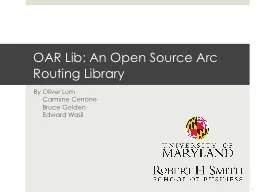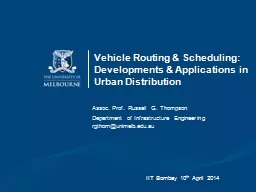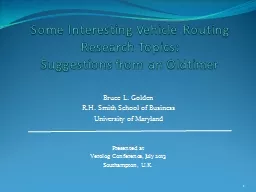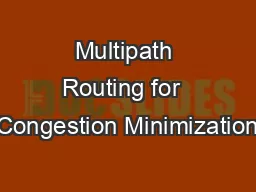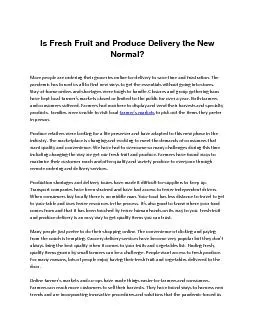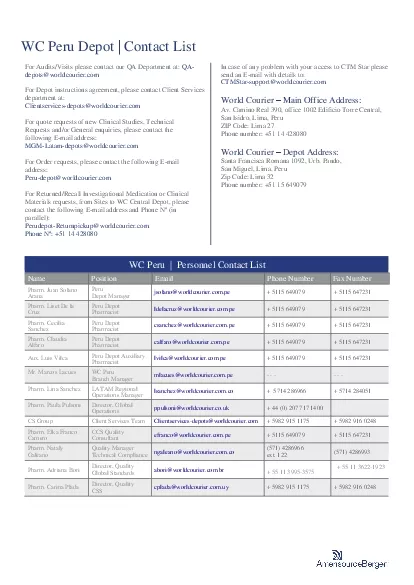PPT-The Min-Max Split Delivery Multi-Depot Vehicle Routing Prob
Author : pamella-moone | Published Date : 2016-03-19
X Wang B Golden and E Wasil INFORMS San Francisco November 2014 Introduction Minmax objective In the MultiDepot VRP the objective is to minimize the total distance
Presentation Embed Code
Download Presentation
Download Presentation The PPT/PDF document "The Min-Max Split Delivery Multi-Depot V..." is the property of its rightful owner. Permission is granted to download and print the materials on this website for personal, non-commercial use only, and to display it on your personal computer provided you do not modify the materials and that you retain all copyright notices contained in the materials. By downloading content from our website, you accept the terms of this agreement.
The Min-Max Split Delivery Multi-Depot Vehicle Routing Prob: Transcript
Download Rules Of Document
"The Min-Max Split Delivery Multi-Depot Vehicle Routing Prob"The content belongs to its owner. You may download and print it for personal use, without modification, and keep all copyright notices. By downloading, you agree to these terms.
Related Documents

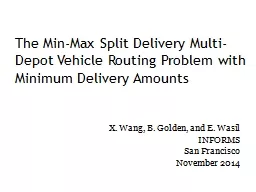



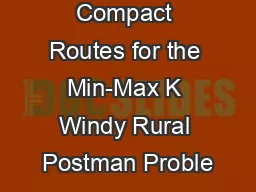
![See[10]formoredetailedderivations.Now,insertingthisintotheright-sidein](https://thumbs.docslides.com/359854/see-10-formoredetailedderivations-now-insertingthisintotheri.jpg)
